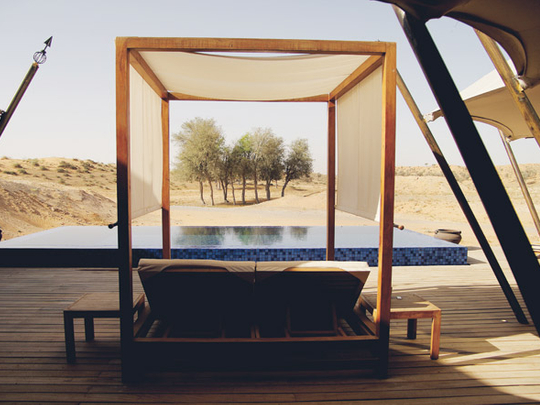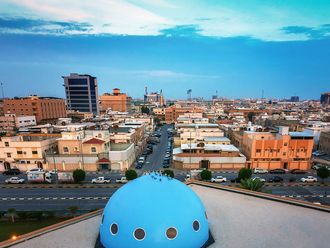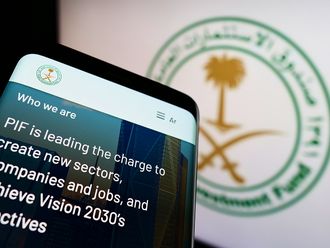
Dubai: Banyan Tree Hotels & Resorts intends to put desert tourism on the global map with Banyan Tree Al Wadi, its new resort and spa in Ras Al Khaimah.
"We are familiar with beach and mountain resorts. More hotels need to enter desert tourism for it to become a particular kind of tourism in its own right... just like jungle or rainforest tourism popularised in Central America," Ho Kwon Ping, executive chairman of Banyan Tree Holdings, said.
Banyan Tree Al Wadi joins the well-established Al Maha and Bab Al Shams in Dubai and follows close on the heels of Liwa's Qasr Al Sarab.
"Even if you add them all up, every single desert resort in the world is nothing compared [to] beach resorts. We're planning another resort in China's Gobi desert," Ping said.
Although he welcomes competition, Ping says his intention is to attract guests to Ras Al Khaimah.
High end
With rates starting at Dh2,600 to Dh4,000 for Al Sahari Tented Pool Villa, which measures 100 square metres, Banyan Tree Al Wadi operates at the higher end of desert resorts in the UAE. It also boasts a huge thermal spa.
"Soon we'll add a mountain resort. We are unique..." Ping said.
The boutique resort company currently owns and operates 14 properties and therefore chooses new locations carefully.
Ras Al Khaimah's environmental diversity as well as its closeness to Dubai made it an ideal candidate, Ping said.
"The beaches and the particular colour of the desert and local vegetation is spectacular... Then there is the stark austere beauty of nearby Oman, which is quite different from anywhere else in the world.
"The emirate is relatively underdeveloped too so you can experience a sense of what the UAE's culture is like," Ping said.
While RAK has its own airport, it is only 45 minutes away from Dubai International Airport. It therefore allows tourists to experience RAK's deserts and beaches while shopping in Dubai — all in one visit.
"We wanted to be located in a place that had an international airport..." Ping said, adding that both emirates compliment each other.
"Dubai trumps in urban development while RAK has a low density ... the right place for a Banyan Tree," Ping said.
Benefits
It is a benefit the operator intends to preserve. It is working closely with Rakeen — the owner of the resort — to expand, conserve and fill the natural reserve with local wildlife.
A few Arabian Oryx and gazelles have already been released, with news of the arrival of a baby gazelle.
"We intend this to be not just a place for people to come to and sit in the sun but a place for them to really understand what desert culture and environment is truly like."
To ensure that the resort is sustainable, recycled water is used for landscaping with a rather progressive use of building materials. "We never pretend that we can be instantly a totally carbon-neutral hotel, but we do have standard practices," Ping said.
Members from the local community have been employed to work at the hotel and provide services in the form of camel guides, while dates are sourced from local farms.
Well connected
The summer weekends are likely to draw UAE and GCC residents, whilst the peak period will most likely see visitors from Europe, or those who are traditionally connected to the UAE.
"We hope to expose more East Asians to Arab desert culture... There is growing interest," Ping said.
By 2013, the Banyan Tree plans to open another 20 properties globally, with two in Morocco and one in Oman in Sifah in the Orascom project.
Its sister company Angsana is going for Abu Dhabi's Eastern Mangroves.
And there could be a Banyan on the Desert Islands too.












